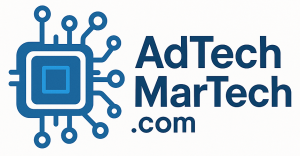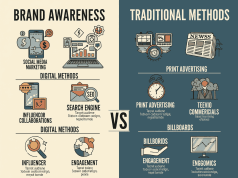In an age where consumers are inundated with digital content, personalization has emerged as a powerful strategy in digital marketing. As 2025 unfolds, the landscape of consumer engagement is transforming, marking a significant shift towards bespoke communication and tailored experiences. This article explores the driving forces behind this personalization revolution, the current trends shaping it, and the tactics marketers are using to connect with their audience more effectively.
Understanding the Personalization Revolution
Personalization in digital marketing refers to the practice of leveraging customer data to create more relevant and engaging experiences. This approach not only enhances user satisfaction but also drives brand loyalty and increases conversion rates. As technological advancements continue to evolve, businesses find themselves with unprecedented access to consumer data, allowing them to craft tailored messages that resonate on a personal level.
The Drivers of Change
- Data Availability: The rise of big data and advanced analytics tools has made it easier for businesses to gather, analyze, and utilize consumer behavior data. The insights derived from this data enable marketers to predict preferences and tailor offerings accordingly.
- Data Availability: The rise of big data and advanced analytics tools has made it easier for businesses to gather, analyze, and utilize consumer behavior data. The insights derived from this data enable marketers to predict preferences and tailor offerings accordingly.
- Shift in Consumer Expectations: Modern consumers are more informed and have higher expectations. They prefer brands that understand their needs and provide customized solutions. The demand for relevant content has shifted the focus from mass marketing to personalized outreach.
- Shift in Consumer Expectations: Modern consumers are more informed and have higher expectations. They prefer brands that understand their needs and provide customized solutions. The demand for relevant content has shifted the focus from mass marketing to personalized outreach.
- Advancements in Technology: Artificial Intelligence (AI) and Machine Learning (ML) technologies are at the forefront of the personalization revolution. These technologies enable marketers to automate data analysis and target audiences with precision.
Trends in Personalization for 2025
As businesses navigate the complexities of personalization, several key trends are gaining prominence:
- Hyper-Personalization: Gone are the days of generic recommendations. Hyper-personalization takes into account individual behaviors, preferences, and even real-time context to deliver tailored experiences. This could range from unique email content to personalized product recommendations on e-commerce sites.
- Hyper-Personalization: Gone are the days of generic recommendations. Hyper-personalization takes into account individual behaviors, preferences, and even real-time context to deliver tailored experiences. This could range from unique email content to personalized product recommendations on e-commerce sites.
- Omnichannel Experiences: Today’s consumers interact with brands across multiple platforms. To remain relevant, businesses are adopting omnichannel strategies that provide a seamless and personalized experience, whether customers engage via social media, websites, or email.
- Omnichannel Experiences: Today’s consumers interact with brands across multiple platforms. To remain relevant, businesses are adopting omnichannel strategies that provide a seamless and personalized experience, whether customers engage via social media, websites, or email.
- AI-Driven Insights: Marketers are increasingly using AI algorithms to analyze consumer data, predict future behaviors, and tailor communications. Tools like chatbots and recommendation engines are becoming commonplace, allowing brands to offer personalized interactions at scale.
- AI-Driven Insights: Marketers are increasingly using AI algorithms to analyze consumer data, predict future behaviors, and tailor communications. Tools like chatbots and recommendation engines are becoming commonplace, allowing brands to offer personalized interactions at scale.
- Privacy-Centric Personalization: With growing concerns over data privacy, brands are focusing on transparent data practices. Offering value in exchange for data, such as personalized discounts or exclusive content, is becoming a standard practice to build trust.
Tactics for Effective Personalization
To successfully implement personalized marketing strategies in 2025, brands should consider the following tactics:
- Segmentation: Start by segmenting your audience based on demographics, behaviors, and preferences. This allows for targeted messaging that resonates with specific groups.
- Segmentation: Start by segmenting your audience based on demographics, behaviors, and preferences. This allows for targeted messaging that resonates with specific groups.
- Dynamic Content: Use dynamic content in emails and on websites to tailor user experiences. This can include using a user’s name, recommending products based on past purchases, or displaying content relevant to their interests.
- Dynamic Content: Use dynamic content in emails and on websites to tailor user experiences. This can include using a user’s name, recommending products based on past purchases, or displaying content relevant to their interests.
- Behavioral Targeting: Leverage data analytics to track user behavior across digital touchpoints. This information can inform when and how to deliver personalized messages, resulting in more effective campaigns.
- Behavioral Targeting: Leverage data analytics to track user behavior across digital touchpoints. This information can inform when and how to deliver personalized messages, resulting in more effective campaigns.
- A/B Testing: Continually test different approaches to personalization. A/B testing allows marketers to understand what resonates most with their audience, refining their strategies accordingly.
- A/B Testing: Continually test different approaches to personalization. A/B testing allows marketers to understand what resonates most with their audience, refining their strategies accordingly.
- Feedback Loops: Encourage and implement customer feedback to enhance personalization efforts. Regularly reassessing consumer preferences helps brands to stay relevant and meet changing consumer demands.
Conclusion
The personalization revolution is reshaping digital marketing in 2025, providing an opportunity for brands to build deeper connections with their customers. By leveraging data, embracing technological advancements, and prioritizing consumer expectations, businesses can create tailored experiences that not only drive engagement but also foster long-term loyalty. As this trend continues to evolve, marketers must remain agile, adapting their strategies to stay ahead in a competitive landscape. The future of digital marketing lies in knowing not just who your customers are, but what they desire—and delivering it seamlessly.









